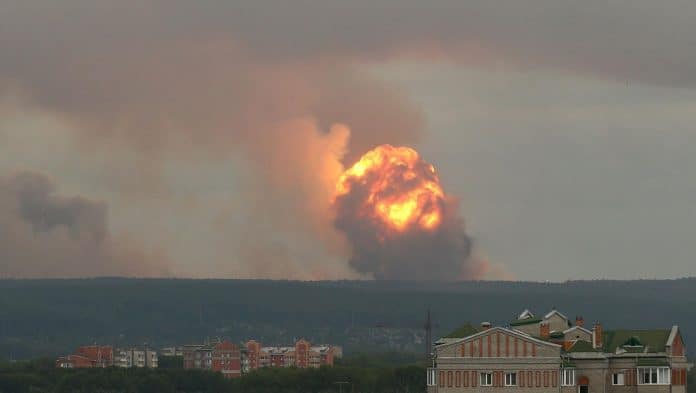An official mourning nuclear condition was proclaimed in Sarov’s Russian town.
Last Thursday, at an army test site in northern Russia, not far from the port of Severodvinsk, five nuclear experts employed by Rosatom, Russia’s state-owned nuclear energy company, were murdered in a blast.
The elite researchers murdered in the incident— Alexey Vyushin, Yevgeny Koratayev, Vyacheslav Lipshev, Sergey Pichugin and Vladislav Yanovsky— have been murdered in experiments on a liquid propulsion scheme containing isotopes, according to the formal report.
Sarov, recognized asArzamas-16 during the Cold War, is one of the secret towns of Russia. Sarov is the harsh equivalent of Los Alamos, New Mexico, one of the birthplaces of US nuclear weapon design, closed to outsiders and available only by unique license.
In other words, there was a nuclear dimension to the experiment most probable. And Russian President Vladimir Putin’s government’s reflexive secrecy has only fuelled further debate about the cause of the incident.
Here’s what we know: Northern Russia authorities detected a brief increase in radiation levels following a military training ground explosion there, Russian state news agency TASS reported on Thursday.
Severodvinsk, quoting emergency services, has a naval base and shipyard and TASS, originally said the event started on board a boat.
The national governor of Arkhangelsk informed TASS that there would be no evacuation of the region around the blast. But the short radiation spike accounts and the incident’s absence of data lifted instant red flags.
An extraordinary Nuclear element
While the Russian Defense Ministry confessed that something had gone incorrect, journalists notified immediately posed concerns about precisely what had happened at the test range.
One of the first to suggest that missile crash had an uncommon element was Jeffrey Lewis, an arms control specialist at the Middlebury Institute of International Studies in Monterey.
On Twitter, Lewis related to an image of August 8 taken by Planet Labs, a satellite imaging firm, displaying the nuclear fuel ship Serebryanka close Russia’s missile test area where the explosion and fire broke out.
The appearance of the ship, he speculated, could have been linked to the testing of a cruise missile powered by nuclear power.
The Serebrynka, Lewis stated, was the same vessel used last summer off Novaya Zemlya, an Arctic Ocean island, to retrieve a nuclear propulsion system from an unsuccessful nuclear-powered cruise missile experiment.
Doubts
“We are skeptical about the statement that a liquid propellant rocket motor was being tested,” Lewis informed CNN, referring to the outbreak of last week. “We believe it was a nuclear-powered cruise missile they call Burevestnik.” The same missile is regarded as SCC-X-Skyfall by NATO members.
A U.S. representative also informed CNN that the Skyfall prototype crash was “probable.” US President Donald Trump also produced the link, tweeting on Monday: “The Russian ‘ Skyfall ‘ crash has worried individuals about the atmosphere and the building and beyond. Not nice!”
Little government data on the Burevestnik / Skyfall is accessible. But Putin boasted last year about fresh weapons he asserted would make outdated U.S. missile defenses. Showing a video, he said: “The missile can move as soon as needed as the scope is endless.”
Questions persist today as to whether after this event something hazardous has been published. Officials have closed down the Dvina Bay in the White Sea for a month for swimming, according to the local newspaper 29.ru.
Is it Chernobyl’s fresh? Certainly, as occurred in Scandinavia before the Soviets recognized the 1986 catastrophe, no huge radiation plume was identified. But formal privacy often fuels a cover-up’s concerns.
In this case, the accident seems more reminiscent of an incident that occurred 19 years ago: the sinking of the nuclear-powered submarine, the Kursk, resulted in the deaths of over 100 sailors and was a disaster of public relations for Putin, who was still in office recently.
Unlike then, Putin now enjoys near-total Russian media monopoly today. And so far, at a confidential army test range, the Kremlin is managing to hide and regulate the awkward news of the incident.
